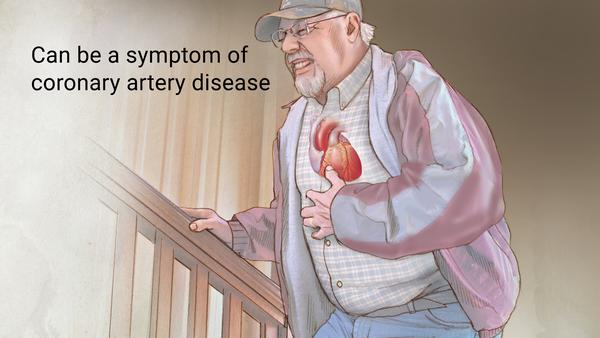
What is Angina?
Angina is also called Ischemic chest pain. It’s a chest pain linked to heart disease. Angina is not a disease in its own right but a probable symptom of coronary artery disease. It is a tightness, pain, or discomfort in the chest that occurs when an area of the heart muscle receives less blood oxygen than usual.
Angina is caused by reduced blood flow to your heart muscle. Your blood carries oxygen, which your heart muscle needs to survive. When your heart muscle isn't getting enough oxygen, it causes a condition called ischemia. The most common cause of reduced blood flow to your heart muscle is coronary artery disease(CAD).
How serious is Angina?
Angina is chest pain caused by reduced blood flow to the heart muscles. It's not usually life threatening, but it's a warning sign that you could be at risk of a heart attack or stroke. With treatment and healthy lifestyle changes, it's possible to controlangina and reduce the risk of these more serious problems.
Several medications can improve angina symptoms, including:
1. Aspirin. Aspirin reduces the ability of your blood to clot, making it easier for blood to flow through narrowed heart arteries. ...
2. Nitrates. ...
3. Beta blockers. ...
4. Statins. ...
5. Calcium channel blockers. ...
6. Ranolazine (Ranexa). ...
7. Angiotensin-converting enzyme (ACE) inhibitors.
Angina (Chest Pain) Angina is chest pain or discomfort caused when your heart muscle doesn't get enough oxygen-rich blood. It may feel like pressure or squeezing in your chest. The discomfort also can occur in your shoulders, arms, neck, jaw, or back.
The pain will last more than a few minutes or will go away and come back. A heart attack can cause lasting damage to heart muscle. If you are having symptoms that do not go away with rest or nitroglycerin, it could be unstable angina, a more serious kind of angina that can lead to a heart attack.
Eating a Healthy Diet
• Eat plenty of fruits, vegetables, and whole grains.
• Choose lean proteins, such as skinless chicken, fish, and beans.
• Eat non-fat or low-fat dairy products, such as skim milk and low-fat yogurt.
• Avoid foods that contain high levels of sodium (salt).
• Read food labels.
Unstable angina belongs to the spectrum of clinical presentations referred to collectively as acute coronary syndromes (ACSs), which also includes ST-segment elevation myocardial infarction (STEMI) and non-STEMI (NSTEMI). Unstable angina is considered to be an ACS in which there is myocardial ischemia without detectable myocardial necrosis (ie, cardiac biomarkers of myocardial necrosis —such as creatine kinase MB isozyme, troponin, myoglobin—are not released into the circulation).
At the same time, cardiologists have realized that such treatments, while effective at alleviating chest pain, do not reduce the risk of heart attacks for most stable angina patients. ... In fact, exercise is one of what doctors call the four E's of angina. The others are eating, emotional stress and exposure to cold.
When increased demand for blood goes away, angina symptoms go away too. ... If one or more arteries are partly clogged, not enough blood can flow through, and youcan feel chest pain or discomfort. While the pain of angina may come and go, it's a sign of heart disease and can be treated.




